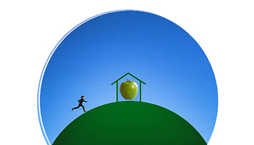 Every year our schools test students. And every year these tests show that students in Baltimore City Public Schools perform far below state averages on all subjects. If we want better results, we need to invert the equation.
Every year our schools test students. And every year these tests show that students in Baltimore City Public Schools perform far below state averages on all subjects. If we want better results, we need to invert the equation.
Students should test their schools.
This changes everything.
As students study their school, they become scientists, problem solvers and innovators.
Using scientific tools and protocols, students identify, quantify and analyze factors which affect their health and learning.
Then, they communicate, innovate, and engineer to create improvements in their school and their lives.
Since improvements in the school environment and operations benefit everyone in the building, this work creates a natural collaboration between students, teachers, staff and administrators as they seek solutions together.
• Can students, teachers and custodians find ways to reduce asthma triggers like dust, chemicals and pests?
• How can high schools screen students for vision problems?
• Can we eliminate bus idling at our schools?
• How can we improve student health?
How students test their school
Students use scientific tools and three different protocols to identify, quantify and analyze the health and learning at their school.
Tools for Schools (by EPA) is a checklist to identify asthma triggers at the school including chemicals, dust, pests, mold and bus idling. Early detection and remediation of asthma triggers can create a healthier school environment, lower absenteeism, and reduce maintenance and repair costs at schools. Students could identify whether green cleaning and integrated pest management protocols are being followed at their school and make or recommend improvements.
Operations Report Card (by the Collaborative for High Performing Schools) is a protocol for measuring the environmental factors that are correlated with learning: temperature, humidity, acoustics, lighting, and ventilation. Collecting and analyzing these factors can identify problems which affect student performance and ways to create improvements in these conditions.
Energy Star Portfolio Manager by EPA enables students to benchmark and compare the energy use of their school to similar schools in the area and to calculate the carbon footprint of their school building. Students will identify ways that the school could reduce energy use in a cost-effective manner.
Surveys developed by students will also help identify opportunities to help students succeed. The problems which students list on their anonymous surveys may not have been identified or addressed by administrators. Here are examples of issues we discovered during a project last year.
• Inadequate bus service caused some students to be late for school and others unable to attend after school programs.
• Some students wouldn’t drink water during the day because bathrooms were locked and hard to access.
• Cockroaches and mice were found throughout the building.
• Most classrooms were overheated during warm weather.
• HVAC systems were inadequately maintained.
• In some cases, teachers had refused to provide students access to water.
• Several students had severe vision problems which had not been screened or detected.
Discovering and remedying issues proactively enables schools to improve student performance and satisfaction prior to school climate surveys.
Mentors
Experiment You engages engineers, building and health professionals with students as teachers and mentors. Working with professionals to solve problems creates a bridge between their learning and potential STEM training and careers.
Teacher Training
Experiment You is designed to train teachers in a co-teaching model during in school instruction or after school programs. Teachers learn the skills and protocols for the program without having to attend professional development or certification courses.
Green School Certification and Sustainability
Experiment You can document the environmental work which teachers and students do toward gaining Maryland Green School certification. We can help schools apply for sustainability grants which would fund Experiment You programing and services to the school.
Extensions
In Experiment Us, students would compare the conditions at their school to public and private schools in Baltimore City and surrounding counties. Students would determine whether school conditions are correlated to the racial and economic makeup of the student body at these schools. Students would examine current and proposed funding and policies at the state, local and national levels and make recommendations.
In Building US, students use the knowledge they gained in the Experiment You project to participate in the 21st Century School Building Project and the neighborhood design process. This learning could be integrated into engineering, technology, art, design and work readiness classes.
As an after school project, it would enable students, teachers, community members and building experts to work on design issues before and throughout the public planning process. This could deepen learning, strengthen school partnerships and better inform process of the needs of the clients and the community.
Upstream, Downstream engages students in learning about the environmental issues in their region and neighborhoods. Students would study the watershed for the Baltimore region and the watershed from their school. Students would study the regional air shed, their local air quality, and how proposed policies on air quality could affect their health.

Leave a Reply